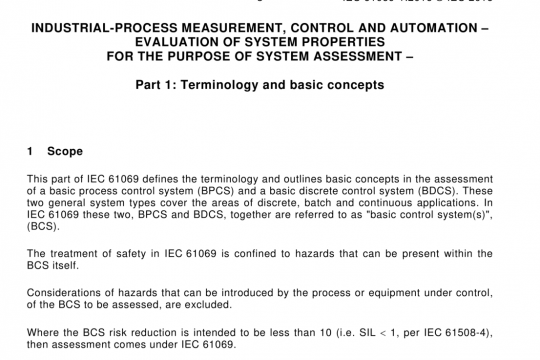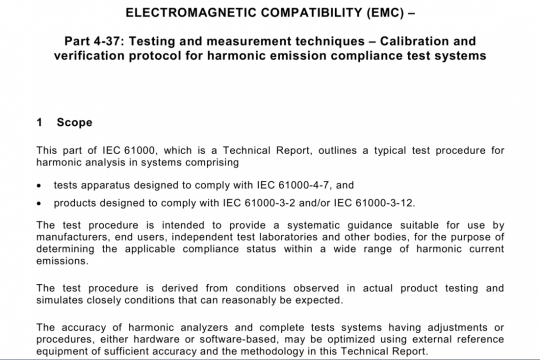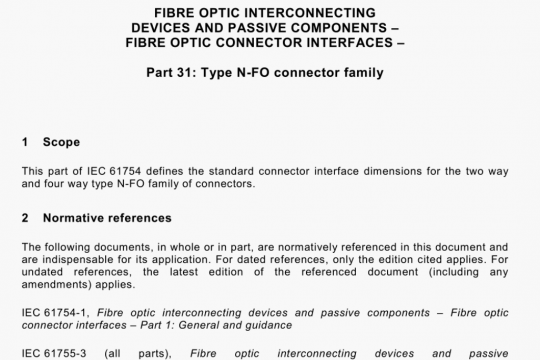IEC 62488-3 pdf free download
IEC 62488-3 pdf free download.Power line communication systems for power utility applications – Part 3: Digital Power Line Carrier (DPLC) Terminals and hybrid ADPLC Terminals.
5.4 Teleprotection system interface
5.4.1 Description
A typical goal of a selective teleprotection device consists of accelerating, delaying, locking or conditioning the protection relay (line distance protection, SF6 low pressure protection) installed in the field at both sides of an AD PLC link.
This is achieved by transmitting a command from one teleprotection device to the other by a suitable transmission system, fast, secure and dependable in order to control the way the protection relay at the other end of the line section behaves.
ADPLC terminals optionally may have on board an integrated selective teleprotection device with its interface enabling communication with protection devices.
Another possible option includes an interface enabling the communication between an external teleprotection device and an ADPLC terminal.
In the first case the interface processes signals/commands directly exchanged with the field protection relay. This means no low frequency signals are exchanged but simply logic criteria/commands are processed. This may be done using GOOSE messages defined in lEG 61850 or digital input or output signals according to IEC 60834-1.
The inputs and outputs should preferably be decoupled from the other signal/command input/output.
In the second case the interface connected to an external selective teleprotection device. Therefore the interface is a voice frequency input/output or fiber optic tranceiver with control circuit, which convert the teleprotection commands into base band signals, which are transmitted to the remote AD PLC terminal and an external teleprotection.
5.4.2 Integrated teleprotection
In case of integrated teleprotection or external selective teleprotection the functional requirements of teleprotection command systems, as defined in IEC 60834-1, shall be applied.
5.4.3 Teleprotection interface frequency band
The nominal frequency band used for the teleprotection service shall be specified within the
frequency range of the nominal high-frequency band.
This may be a fully dedicated and pre-allocated frequency band or an alternative one which is allocated when the terminals switch to the teleprotection mode.
For this second operational mode, to avoid the risk of interference and optimize command transmission, the other signals present at the low frequency interface may be inhibited, while the commands signal is boosted.
In the same way, in order to get the best possible signal to noise ratio for transmitting a command, the signal resulting from the digital modulation may also be inhibited.
5.4.6 Teleprotection interface signal levels
• The minimum range of the transmit input level shall be -20 dBm to 0 dBm
• The minimum range of the received output level shall be -20 dBm to 0 dBm
5.4.7 Teleprotection interface control circuits
Control inputs may be provided to accomplish boosting of the teleprotection signal to a
maximum specified high frequency PEP output power, and to interrupt the other signals for a
short time of typically less than 500 ms, during teleprotection transmission.
ADPLC terminals shall include control circuits to shift the terminals from communication mode to teleprotection mode if the temporary band is allocated for transmitting the teleprotection signal.
The control inputs shall operate with a loop resistance of up to 500 0.
Control outputs are often provided to give an alarm to the teleprotection terminal in case of
failure or degradation of the ADPLC link.
6 HF line interface
6.1 DPLC high frequency band & channeling
The typical high frequency ranges used in Europe span from 40 kHz to 500 kHz (up to 1 000 kHz in some countries and for special application (e.g. cables) ranges down to 16 kHz may be used). Parts of this range may be barred by national regulations.IEC 62488-3 pdf free download.




